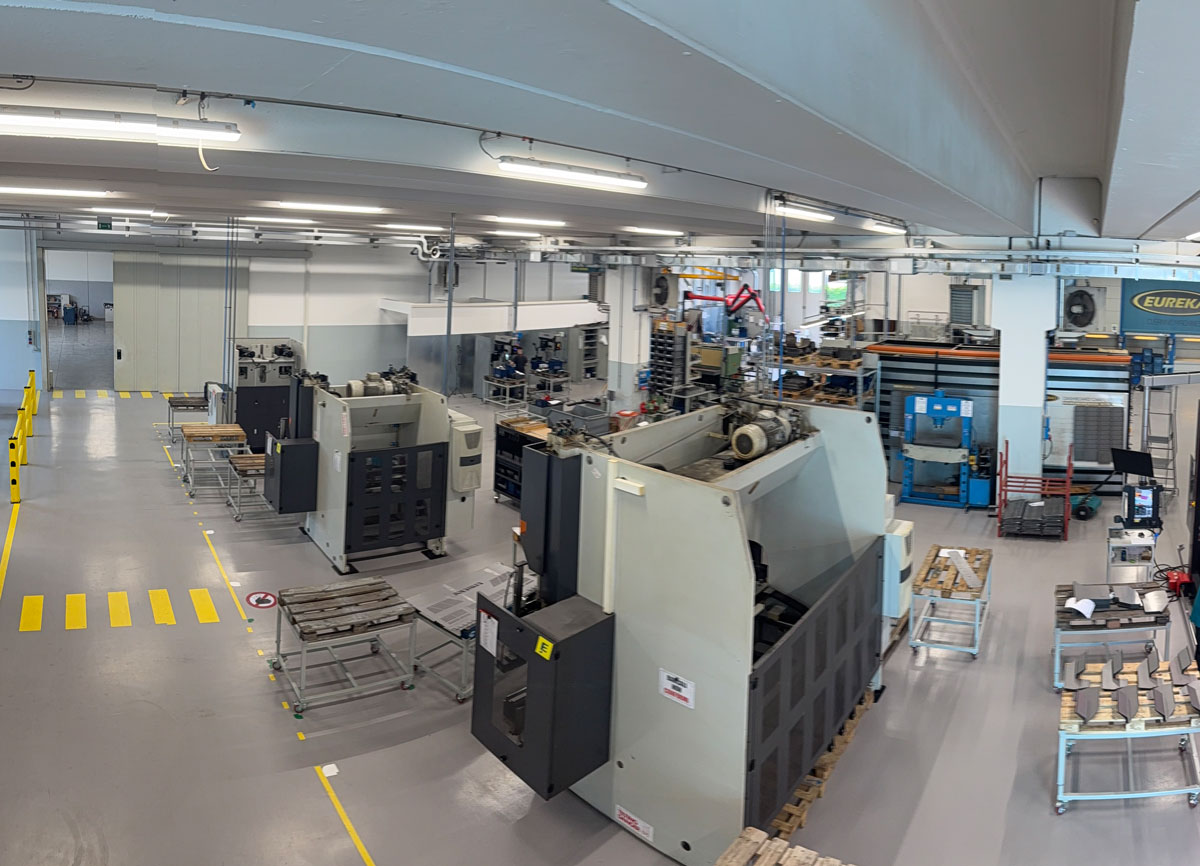The customer
The company in question specialises in sheet metal working, offering a wide range of solutions for cutting, bending and welding metals. Using state-of-the-art machinery such as press brakes, lasers for sheet metal cutting, and robotic welding.
The company is characterised by its ability to manufacture tailor-made, precise and high-quality products. The core business consists of providing innovative and highly efficient solutions for the metalworking sector, meeting the needs of various industries, from automotive component production to furniture and heavy industry.
The customer’s need
The company needed to organise the introduction of two new strategic work centres, overhaul the logistical flows in all departments and streamline working methods by providing ad hoc improvement activities.
The ultimate goal was to optimise the work area, improve productivity and standardise workflows to ensure greater efficiency and long-term sustainability.
Solution provided
The work system was structured through planning at regular intervals, with specific tasks assigned to a multidisciplinary team to take care of operational, security and IT 4.0 system integration aspects. Here are the main steps:
Data collection and analysis
We conducted a detailed mapping of the existing layout, documenting the location of work centres, material storage areas and logistics areas. To better understand the operational dynamics, we analysed material and operator flows, identifying critical points such as bottlenecks, redundant movements and logistical inefficiencies. At the same time, we collected quantitative data on cycle times, production capacities and volumes processed, as well as internal logistics metrics such as distances travelled and handling times.
Flow Analysis
Through an in-depth analysis, we studied the flow of materials from the receipt of raw materials to the dispatch of the finished product. This allowed us to identify accumulation zones and slowdown points. We also analysed operators’ movements between workstations, mapping them with tools such as spaghetti diagrams, which revealed unnecessarily long or unergonomic routes. Finally, we analysed the flow of information, identifying inefficiencies in communication between the different production and logistics departments.
Designing the new layout
Based on the analysis, we designed a new production layout to meet the customer’s specific needs. The design followed basic principles such as creating work cells to group related activities, designing linear flows to minimise internal transport, and separating production, logistics and support areas. We used digital tools such as CAD software to simulate the new layout and test its effectiveness, allowing the client to visualise the end result before implementation.
Planning and implementation
Once the project was validated, we developed a detailed plan to implement the new layout. The transition was divided into steps to ensure the continuity of production operations. We established a logical sequence for moving the machining centres and set up a test phase for each step to check that everything was working properly before moving on to the next phase. In addition, we took care of communicating the changes to the staff by organising training sessions to prepare operators for the new configurations.
Efficiency in logistics support
During the project, we also paid special attention to logistics efficiency, integrating the production layout with solutions to optimise the management of material flows and storage areas. Firstly, we minimised the distances between receiving, production and shipping areas, creating more direct and fluid routes for materials. In addition, we reorganised the WIP (Work In Progress) warehouse and storage areas, implementing FIFO (First In, First Out) logic to improve stock rotation and reduce the risk of unnecessary stockpiling. To facilitate internal movements, we introduced visual systems and signage to facilitate quick recognition of areas and routes, minimising errors and optimising transport times. These changes not only speeded up logistics flows, but also improved traceability and the overall management of operations.
Monitoring and continuous improvement
After the implementation of the new layout, we closely monitored performance to compare it with the initial targets. Through operator feedback and analysis of operational data, we were able to identify further possibilities for improvement, which were gradually integrated into the system. This approach ensured a result that was not only satisfactory in the short term, but also sustainable and adaptable in the long term.
Tools and methods used
During the project, we applied methodologies such as Value Stream Mapping to analyse value streams and Lean Manufacturing principles to eliminate waste. Using simulation software, we were able to predict the impacts of changes and optimise the layout before even implementing it. The end result was a leaner, more efficient and flexible production system, with a significant improvement in productivity and overall organisation.
Benefits obtained
The benefits obtained at the end of the project were significant and measurable, both in terms of production and logistics. Here are the main results achieved:
- Reduced internal handling time: thanks to the new layout, the distances travelled by materials and operators have decreased, improving cycle times;
- Increased production efficiency: flow optimisation has eliminated bottlenecks, enabling a 15% increase in overall production capacity;
- Increased production efficiency: flow optimisation has eliminated bottlenecks, enabling a 15% increase in overall production capacity;
- Improved logistics management: the organisation of space and the introduction of the FIFO system have reduced unnecessary stocks and improved material turnover, reducing storage costs;
Results
-58%
Work centre logistics time
-21%
Reduction of raw material stocks
-39%
WIP reduction in m²
-64%
Space occupied by shelving
